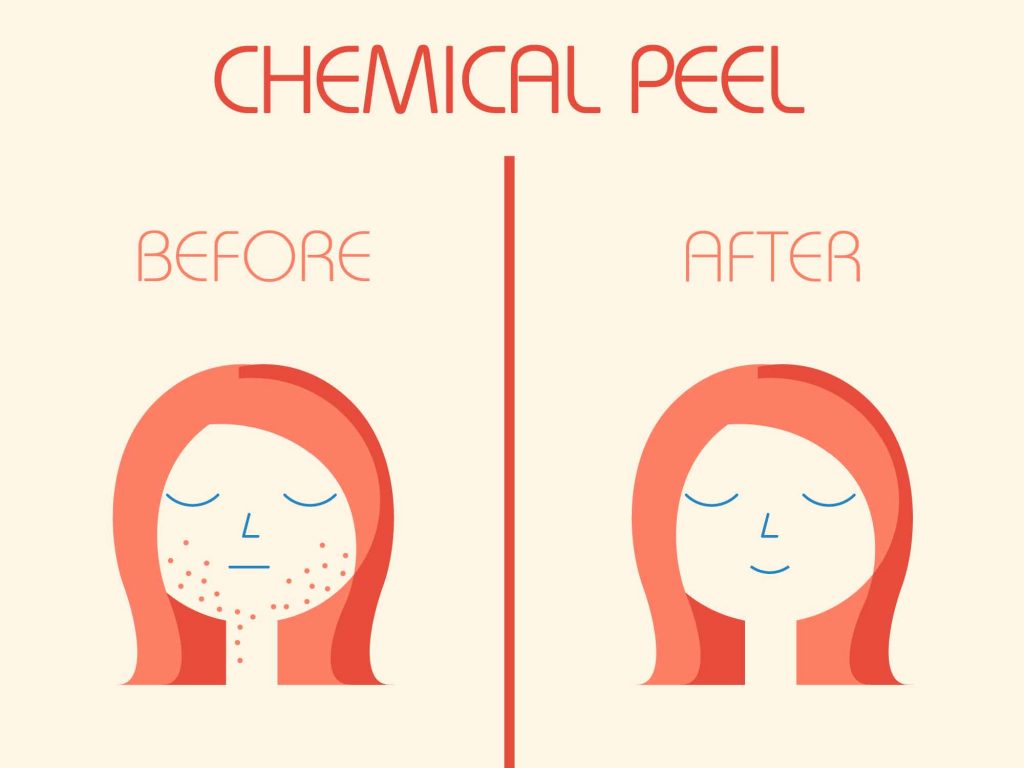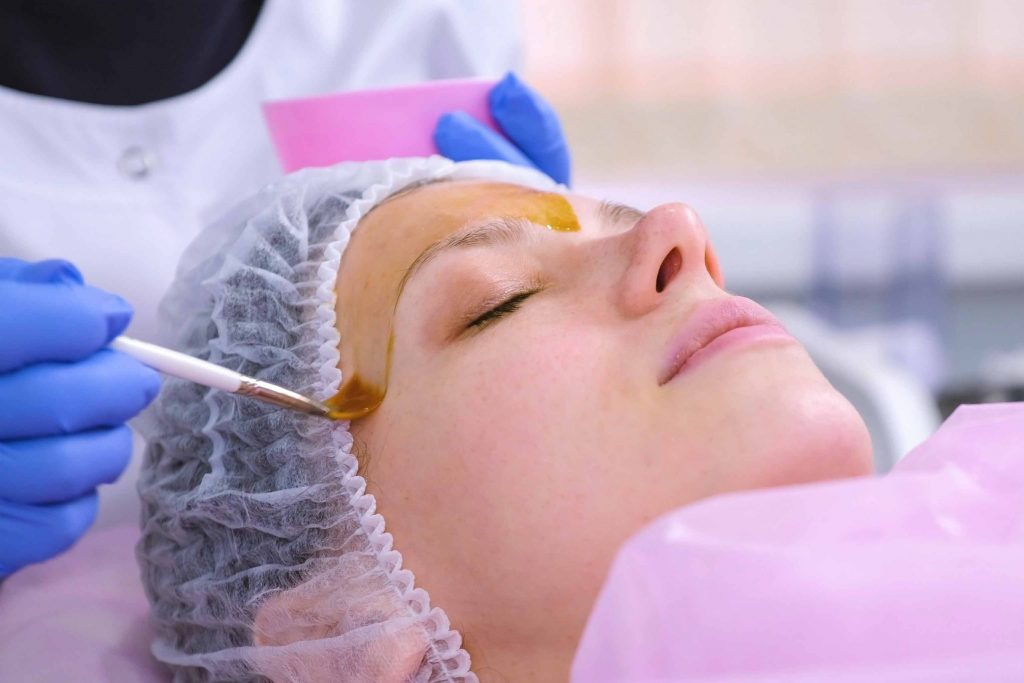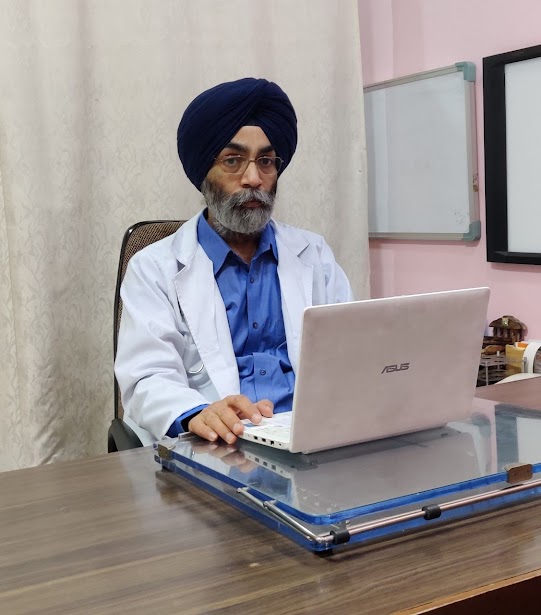Get Smooth & Glowing Skin With Chemical Peel
Soft and bright skin is desired by all and to maintain the smooth skin in this chaotic life is very difficult. Amidst all the dirt, pollution and not so healthy diet and atmosphere, your skin might be left looking dull.
Chemical Peel is a perfect method to regain your youthful skin as it helps in getting rid of multiple skin problems, such as damage from sun or acne scars. Under this process, a chemical solution is applied on to your face or neck, which peels off the outer layer of your skin to reveal a clear youthful skin underneath.
The Chemical Peel treatment is a great way to solve many of the skin problems, which are included below:
- Acne, spots, freckles or pigmentation
- Sun damages
- Light wrinkles around your face
- Improving the overall appearance of the skin

A SUITABLE CANDIDATE FOR THIS PROCEDURE
Chemical peel solution is more beneficial for the individuals with light skin tone as it gives the efficient results. Although, it does not have any harmful effect for the people with dark skin tone.
Find a Plastic Surgeon in Your Area
Find Top Surgeons in India by Procedure
Find the Cost of a Procedure
Before undergoing the actual process, a thorough analysis of your medical history along with your physical examination will be conducted to ensure that this method will not have any bad impact on your skin. You must be very genuine and clear with your concerned specialist regarding all kinds of your skin conditions along with your expectations from the treatment.
THINGS TO CONSIDER
- The expert will properly instruct you to avoid going out in the sun for a few weeks before and after the procedure.
- You need to stop the intake of any medication three days prior and it is also necessary to quit smoking.
- Avoid using wax or epilators for hair removal on the concerned parts, before the process. It is also better to avoid the usage of exfoliators.
RISKS ASSOCIATED WITH THE TREATMENT
Chemical peel procedure will show great results if performed by a certified and skilled doctor. On the other hand, the chemical concentration can prove to be harmful if not handled with care. Some of the risks associated with it, are mentioned below:
- High intensity of chemical solution could leave scars on the skin, usually on the lower region of the face. However, the antibiotics can be used to reduce the scarring.
- It might cause uneven skin tone for some patients; hypopigmentation is very common after a chemical peel. This problem of discoloration generally occurs with dark skin tones.
- In some cases, it might cause bacterial or fungal infection.
- In rare cases, the high concentration might lead to heart, lung or kidney disease if the chemical is left on for too long.
TYPES OF CHEMICAL PEEL
According to the intensity of the skin complaints, the specialist will decide between three types of chemical peel methods available, which are:
Light Peel
Under this technique, a mild concentration of glycolic acid or salicylic acid is used. This treatment is best suited for the skin conditions like mild acne scars or light wrinkles. It also reduces sun damage, resulting in a glowing skin. It is best suited for people who need gradual results without affecting their daily life. It does not leave any kind of red mark or rash. A light pinkish skin tone will be visible after this process.
Medium Peel
Medium peel uses higher chemical concentration as compared to light peel. This method uses chemicals like trichloroacetic acid in combination of glycolic acid to produce better results. The patient will feel stinging sensation upto 20 minutes after the procedure.
Deep Peel
This technique has the most promising results out of all the peel treatments as it helps brighten the skin while improving the skin texture.It even helps to get rid of harsh lines and wrinkles around the face. Deep peel uses chemicals like phenol which are highly concentrated and need to be administrated under close watch. The doctor will have to keep a regular check on the vitals of the patient.

As an initial step, the expert will use a specific cleansing agent to eliminate all the dirt or dust particles, making your skin clean. After that, he will give you local anaesthesia to numb the concerned skin area and apply the appropriate chemical peel solution onto your skin according to the skin conditions and the outcomes expected. Then, he will start the process of exfoliation, which will continue for a few minutes. This solution is then removed to reveal the bright and glowing skin underneath. After the procedure gets completed, the doctor will apply a neutralizing lotion to soothe the skin and then, cover up the treated area with bandages. He will also prescribe some painkillers to ease any kind of pain.
THE RECOVERY PERIOD
You must strictly avoid to go out in the sun for about 2 to 4 weeks after the procedure, depending upon the speed of your recovery. The time required to heal the skin will also depend upon the intensity of the treatment.
You might notice redness or swelling on the treated skin for the initial period. You can apply ice or cool pads to ease the discomfort.
After your skin has healed properly, you will be able to notice a dramatic improvement in the form of soft and glowing skin.
our surgeons:




















